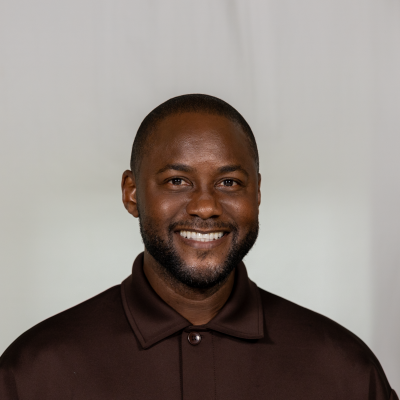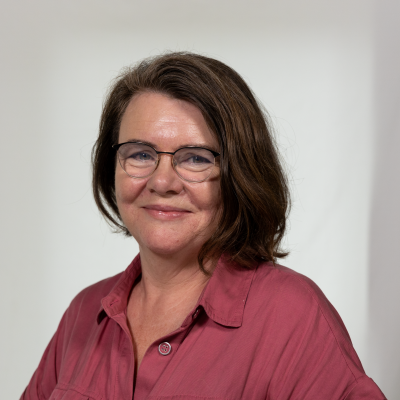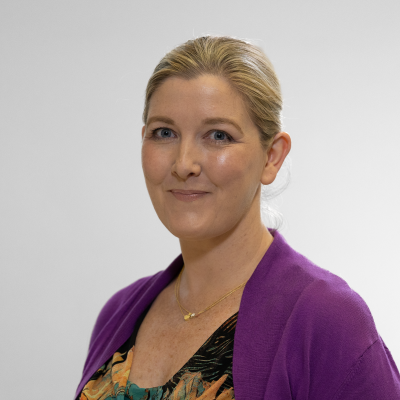Section 6: Building Inclusive School Cultures and Policies
Restorative Practice in Schools: Implementing Restorative Approaches to Resolve Conflicts and Build Positive Relationships Within the School Community
Andrew B. Campbell; Emer Byrden; Seán Gleasure; and Leah O'Toole
 Interactive elements such as videos, podcasts, and expandable text boxes have been removed from this print version.
Interactive elements such as videos, podcasts, and expandable text boxes have been removed from this print version.To access the full interactive content, please scan the QR code to view the online version of this chapter.
Example Case
Food for thought before we begin:
Traditional school example
Three children rush up to the teacher at the end of free-play time. All three are shouting and pushing each other aside, clearly wanting to say something urgently. The teacher holds up her hand and says, ‘All of you have broken the rule of no running in the corridor and no shouting. For all of you that will mean no token earned for the next part of the day.’ With that, one child bursts out crying, pushes another one over and says, ‘Now look what you did. I’m going to make you pay!’ That child falls awkwardly and starts screaming. The third child runs off in the confusion.
Now the teacher has one violent, furious child, one injured, furious child and one missing, furious child on her hands, not to mention the other 23 children waiting for her in the classroom.
Does this sound familiar to you as a teacher? If so, you may be interested in this chapter.
Restorative school example
Three children rush up to the teacher at the end of free-play time. All three are shouting and pushing each other aside, clearly wanting to say something urgently. The teacher holds up her hand and says, ‘Ok, we all might just need to stop for a second. I can see you all want to talk to me, I can see it’s urgent. It looks like you are all pretty upset. You know by now that my brain can only hear one voice at a time. Do you think you could help me out? Could you all sit with a friend while the class eats lunch? If we can all agree with this, I will chat to you all one by one and then maybe we can work this out.’
Now the teacher still has three upset children on her hands, but the process of de-escalation has started. The three children have something new to think about (lunch with a friend!) and there is a clear path ahead. Any harm that has been done to relationships can now be repaired, starting with the teacher’s conversations with each child.
Does this sound like a ridiculous dream? If so, you may be interested in this chapter.
In the examples above we see the contrast between a traditional, rules-based, reward-and-punishment approach to solving a typical everyday problem in a school context and a restorative approach to the same problem. The teacher in the traditional example did nothing wrong, she followed the school’s policy: the children had broken the rules; she administered the punishment equally and clearly. Crucially however, the children also did not do anything wrong. They just reacted as children to a situation of asking for help, albeit in a way that adults tend not to like or to recognise. They were met with a punishment, because they asked in a way the teacher did not like. Thus everyone, the children and the teacher, found themselves in a much worse situation pretty quickly. If you have worked in a school, this type of situation is probably not new to you. Approaching the problem restoratively asks that we, as teachers, are aware of and communicate our own needs and feelings clearly, recognise or try to recognise the feelings and needs of students, and focus the energy of all parties on the restoration of relationships, rather than the allocation of blame, consequences, and punishments (Hopkins, 2011). We invite you to read on if you would like to learn more.
Initial questions
- What do we mean by Restorative Practice as a way of being in schools?
- Who are you and how do you understand yourself as a restorative teacher?
- What does Restorative Practice look like in practice and what are the benefits for all members of the learning community?
- What are the common critiques of Restorative Practice? What are the common myths?
- How can Restorative Practice foster inclusion and challenge inequalities?
Introduction to Topic
In this chapter, we will consider restorative practice (RP) in schools and think about how to implement restorative approaches in order to build positive relationships and resolve conflicts when they arise within the school community. In the collaborative writing process for this chapter, we started with five foundational questions above.
These questions formed the basis of our discussions, which we then mapped onto the chapter structure for this handbook of inclusive education. The first question will be answered in this Introduction, the other questions will be woven through the subsequent sections. We understand RP as a return to practices of being together in a community that can be traced back to at least 2000 BCE (Thorsborne, 2014) – or, indeed, as old as human history, as suggested by Zehr (2014). Much research situated in the North American context cites First Nations people as the originators of a restorative approach, but similar practices have been ongoing in many different cultures, which will be discussed further on in this chapter. Within public discourse around schools, there is often a quest for something new that will solve all the problems which arise in the classroom. While many new interventions have been tried, research shows that groups work best at all levels in society when value is placed on intentional relationship building (Ganotice et al., 2022; New York Times, 2016). Classrooms are first and foremost groups, but they are also groups which must come together day after day after day. Therefore, finding a way of building connection and repairing the almost inevitable interpersonal hurt or harm that arises between group members is essential.
In the broadest sense, RP represents “a broad term that encompasses an array of non-punitive, relationship-centred approaches for addressing and avoiding harm” (Darling-Hammond et al., 2020: 295). Fronius et al. (2019: 1) describes RP as “a growing social movement to institutionalise non-punitive, relationship-centred approaches for avoiding and addressing harm, responding to violations of legal and human rights, and collaboratively solving problems.” Anfara and colleagues (2013) clarify the relationship between values and practice with respect to RP, highlighting that restorative values serve to guide the delivery of RP. Within schools, practising restoratively takes on a particular nuance. It is more than something that is done only in a specific instance of harm, it represents a way of being throughout the whole day. Traditional punitive systems of behaviour management and discipline in schools have borrowed heavily from the criminal justice system (Hopkins, 2011; Zehr, 2014) – perhaps, with a kinder hand. It is important to note that the context of school requires that individual actors can continue to share each other’s space in the aftermath of harm caused and experienced. Therefore the response to harm must address the issue of how to repair the damaged relationship.
Structural disadvantages in traditional behaviour systems and how RP can address them
Traditional punitive or retributive models (Burnett et al, 2015) of dealing with discipline in schools reinforce dominant societal power structures, replicate hierarchies and structural disadvantage, and normalise violence as just and fair (Gregory et al., 2013; Nolan & MacRuairc, 2022). As a result, children internalise their place in the social order as one of compliance to avoid harm, learn to repress their feelings and needs, and begin an endless quest for approval from a significant adult irrespective of how that adult treats them. Schools have favoured punitive, behaviourist approaches borrowing heavily from criminal justice systems with the justification of managing behaviour and maintaining order and discipline (Hopkins, 2011; Nolan & MacRuairc, 2022; Rogers, 2000). Within this, the language of criminal justice prevailed (Zehr, 2014), with terms such as ‘rules,’ ‘consequences,’ ‘victim,’ ‘perpetrator,’ ‘blame,’ and ‘guilt’ being prominent. As part of this, conflict between children in schools has traditionally been resolved through the teacher’s mediation in administering some form of consequence for a behaviour deemed to be undesirable or problematic – with little emphasis on repairing the damage that has occurred to the relationships between members of the community. Such disciplinary and exclusionary approaches have been demonstrated to be ineffective and harmful, while also being associated with racial disparities which exacerbate structural inequalities and contribute to challenges across the lifespan. In one report citing the connections between prisoners’ childhood and family background, on discussing school experiences, noted that 63% had been suspended or temporarily excluded, and 42% stated that they had been permanently excluded or expelled (Williams, Papadopoulou, and Booth, 2012). In another report, the Chief Inspector of Prisons for England and Wales found in its annual report for 2017-2018 that 89% of detained (or ‘imprisoned’) children and young people aged 12-18 have reported being excluded from school (Perera, 2020). By contrast, research has established that restorative schools demonstrate reductions in disciplinary disparities with respect to racial and ethnic groups discussed above (Darling-Hammond et al., 2020; Gregory et al., 2013; Zakszeski & Rutherford, 2021). Traditional approaches have also been characterised as creating power imbalances between children and educators which is detrimental to their voice and empowerment (Tyler, 2006; Zehr, 2014). As educators we must be knowledgeable and mindful of the historical racial disparities and the impact of institutional racism and how it shows up in our classrooms, especially in the areas of suspension and expulsion.
Let’s pause and reflect
By contrast to traditional approaches rooted in a mindset of ‘behaviour management,’ a restorative approach actively seeks to intentionally resolve structural inequalities and harm that occurs in the classroom. In our writing of this chapter, we drew on the analogy of a whirlwind to represent the nature of this process, reflecting the multidirectional manner in which interactions occur between members of the learning community, and the tensions and complexities which are involved. By recognising that damage to relationships can be intentional or unintentional, it instead focuses on the needs and feelings being communicated in a given situation. Being restorative encourages empathy, connection and belonging at all levels of practice. RP in schools seek to disrupt the replication of harm in the following key ways (Thorsborne and Blood, 2013):
- Establishing shared values.
- Fostering empathy, belonging, and connection.
- Using restorative language.
- Focusing on feelings and needs rather than behaviour.
- Using restorative conversations, circles and meetings to respond to harm and repair relationships.
Furthermore, RP can challenge inequalities and foster inclusion by creating brave spaces with a strong sense of belonging (Campbell and Eizadirad, 2022). A brave space is one with opportunities for students to speak up, to express their feelings, to be heard, to listen to each other, to understand and respect differences, to make mistakes, and to correct those mistakes. A brave space must be cultivated and sustained, and the onus is on us as educators to do so. RP supports the creation of brave spaces by laying the groundwork for and relentlessly practising inclusive and non-violent communication in all interactions.
Key aspects
Situating RP as a cross-cultural ancient practice
As noted previously, the roots of RP can be traced to ancient times. It has been highlighted that indigenous South Pacific and American cultures took an approach to conflict centred on taking accountability for one’s responsibility in causing harm and the subsequent reparation of the ruptured relationship (Darling-Hammond et al., 2020; Zakszeski & Rutherford, 2021). Indigenous cultures from First Nations to Maori, from many African and Aboriginal to Celtic cultures practised the fine art of sitting together peaceably to resolve harm and repair the group so that it could continue (Grinnell College, 2022). As survival outside of the group was not possible, banishment meant certain death. In order to survive, one had to be prepared to make amends for harm caused and not shy away from hearing the stories of those who were harmed. There is a curious symmetry between this and the modern-day classroom. Expulsions from school are incredibly harmful acts that have often lifelong impacts (Darling-Hammond et al., 2020; Gregory et al., 2022), and many, who are harmed by peers or adults in school, feel that the traditional, punitive system directs its attention to those that cause harm, and little or no attention to those who have been harmed – their stories are less heard. RP is not an adaptation of the carceral justice system for schools, rather it is a practice that attends to all members of the community in order to foster belonging and strengthen community bonds.
RP as a relational, inclusive problem-solving continuum
RP in schools involves a relational approach to problem solving using a robust continuum of processes and models (Thorsborne & Blood, 2013). Below we identify some of the elements of this continuum which are essential to the approach. While a pattern exists across the RP literature whereby the approach is ill-defined (Darling-Hammond et al., 2020; Zakszeski & Rutherford, 2021), several fundamental elements consistently arise, as will be explored:
- Each group or community ideally shares a set of core values (Hopkins, 2011) that need to be established together. This gives the group clear direction and makes the intention of the group visible to all. If, for example, a class group of young children values respect, tearing up another’s work does not honour that value. The values become the terms of reference for all interactions in the group. They are also very useful for teachers for self-reflection (i.e., Am I showing respect? Does my action display empathy?). These values can be established by the whole school community, or by an individual class group, depending on the implementation plan for RP in the school. Either way, it is imperative that all members of the group are aware of the shared values and ideally have been given the opportunity to contribute meaningfully to the agreement on values.
- Restorative language, or the language of non-violence (Rosenberg, 2013), is the gold standard for interactions. Shaming and blaming words are replaced with factual observations and an honest request for a solution that would work for all. This language work requires pre-teaching and practice. Ideally the teacher would be modelling the use of restorative language throughout the day. Here are some examples to illustrate the difference:
| Blaming and shaming | Restorative |
|---|---|
| Why did you kick your classmate? | What happened? |
| I hate it when you shout. You are a bad, angry person. | You are shouting. I feel scared because I don’t feel safe. |
| Why are you always late? | I see you have trouble getting to class on time. Is there something we can do about that? |
- Restorative circles invite members of the learning community to share information about themselves and build a sense of community and belonging (Darling-Hammond et al., 2020). For example, they may share their energy levels at the start of the day to foster an awareness in the group of how everyone is that day and express something about their interests or preferences which can forge bonds in the group. This forging of empathy and connection is the backbone of RP.
- Restorative conversations or meetings occur when conflicts or tensions arise in relationships between members of the learning community, as they inevitably do in all human relationships (Darling-Hammond et al., 2020; Zakszeski & Rutherford, 2021). Depending on the extent or severity of the situation a two-way conversation or a more formal meeting are both scaffolded by the following six essential questions, which seek to repair the damage which has occurred:
- What happened?
- What were you thinking at the time?
- What have you thought about it since?
- Who has been affected and in what way?
- How could things have been done differently?
- What do you think needs to happen next?
These six questions (or localised versions of them) are common to all iterations of RP in schools. There can be variation in the order of the middle four questions, but all approaches start and end with the same two questions. It is recommended that all six questions are asked in this order for the practitioner starting out. As experience builds the practitioner listens out for answers to these questions being given without prompting. In this case, the particular question that has been addressed is skipped. The key message is to shift the opening question from why to what happened when harm occurs, to give all actors the chance to tell their story via the middle four questions, and to move forward with the final question (Restorative Practice Ireland, 2018).
Dispelling myths about RP
Letting people off the hook
The most common critique of RP is that it lets people off the hook (Anfara et al., 2013; Darling-Hammond et al., 2020). In practice, however, when a person truly accepts and understands that they have caused harm, intentionally or unintentionally, they usually want to make amends and restore the relationship. If the person does not do so, the practice of a restorative conversation or meeting can be offered to prompt them to do so, not because they have to, but because they see the value in it. It is key that the participants are willing to partake. Forcing someone to partake in RP totally undermines the whole process and tears away its integrity. There is high accountability in RP. People without exception are called to answer for their actions and to be accountable to themselves and to their community. Accountability, responsibility, and healing are the core values of RP (Burnett et al., 2024).
Quick-fix circles
Circle work in RP can suffer from being considered an early childhood practice that has no place as individuals progress through education. Firstly, we can learn a lot from early childhood practice. Secondly, circles form just one part of RP. The role of the facilitator in the circle is key. The circle needs a clear intention and willing participation, or it will be inauthentic and it will not work. This can be a common stumbling block. A teacher may try a circle, decide it did not work because the children did not listen, and then give up on all aspects of RP. Circle work can only be done by invitation, and with willing participants, otherwise it is coercion, not connection. Circle work also takes practice. The aim of circles is to establish and live the values of community, strengthen connections, build empathy and offer a space for true belonging. They are also a space wherein we get to practice restorative language or nonviolent communication (Rosenberg, 2013). This is not the language that surrounds us on the whole, certainly in Western society. We are so inured to the harm caused by the shaming and accusatory language we use, that the restorative language of honest feelings and needs can feel uncomfortable and unnatural at first. This is why it is a practice and not a quick fix intervention. When we become more fluent in this language and can communicate with each other without causing harm, we begin to talk meaningfully about making amends and repairing relationships where harm has been done.
A waste of time?
All practice takes time. RP takes time, but what is more important and powerful in education than creating and cultivating an inclusive respectful classroom culture and climate built on a sense of belonging and community? These are fundamental skills that will impact everyday learning inside and outside of the classroom. RP is not something to distract from the curriculum or the teaching and learning equation, but something that will build and strengthen the teaching and learning process (Hopkins, 2011; Zakszeski & Rutherford, 2021). Consider how much time is spent by the teacher on a daily basis ‘correcting’ and ‘referring’ behaviour issues under the punitive model, wherein only the teacher can decide what needs to be done. Consider how much time may be freed up for the teacher to teach by enabling children to have the confidence and skills to navigate their own conflicts in a non-harmful way. The reality is that it will take some time for this practice to become embedded. RP is not just fixing something, but rather building those foundational skills needed for our students to engage effectively in their learning community and beyond. RP brings an attitude and aptitude to the individual and to the larger society as a whole when these aspects can be generalised beyond the classroom.
Discussion of the key aspects of RP
Despite the proliferation of RP in schools in recent years, research in the area remains limited – albeit growing, especially in the US context (Acosta et al., 2019; Darling-Hammond et al., 2020). As Zakszeski and Rutherford (2021: 382) note, “the ‘cart’ appears to be before the ‘horse’ when it comes to research on school-based restorative practices,” whereby limited research exists evidencing the effectiveness of the approach despite its growing prominence. In spite of this practice-to-research gap, however, the extant literature demonstrates a range of benefits associated with RP, including improved school climate, gains in children’s social/emotional skills, improvements in children’s behaviour, reductions in punitive disciplinary practices, and greater levels of academic engagement (Darling-Hammond et al., 2020; Gregory et al., 2013; Zakszeski & Rutherford, 2021). Some evidence also exists of reductions in bullying incidents, improved child attendance, and gains in children’s academic performance in schools which take a restorative approach (Darling-Hammond et al., 2020; Gregory et al., 2022). Notably, research has also established that restorative schools demonstrate slight reductions in disciplinary disparities with respect to racial and ethnic groups discussed above (Darling-Hammond et al., 2020; Gregory et al., 2013; Zakszeski & Rutherford, 2021). Importantly, as well as building a strong sense of community and belonging which lessens the likelihood of conflict, the restorative approach supports all members of the learning community to demonstrate accountability for their actions, for their role in conflict in relationships, and for their responsibility to take measures to repair any damage that has occurred.
While one teacher alone can make a difference by using RP, another teacher may realise that something interesting is happening in a particular class and the practice can grow from there. Ideally, however, a whole-school approach with strong support from the school management team is preferable. An individual teacher who is working in a school that does not support RP still retains the choice of how to interact with students. As a sole practitioner in an unsupportive structure, it is important not to become despondent. If you are aware that a system is harmful, consider to what extent you are going to replicate that harm for the sake of keeping your job. Choosing the words that you speak and the nature of interactions for the day-to-day operation of the classroom remains in the gift of the teacher. The individual teacher may not be able to change a punitive system, but they do get to choose what words are spoken by them as a teacher. The act of showing another way of being to students is nonetheless powerful.
It has been argued however, that RP is most effective when it constitutes a comprehensive change in the overall philosophy and culture of a school, altering the shared assumptions, values, and beliefs among stakeholders (Gregory & Evans, 2020; Zakszeski & Rutherford, 2021). Such an approach typically involves the training of all children and school personnel, thereby supporting intentionality and whole-school commitment (Darling-Hammond et al., 2020). However, Zakszeski and Rutherford (2021) caution against such a ‘train-and-hope’ approach to professional development with respect to RP, questioning the fidelity of all educators in a school to the principles of the approach. In this regard, it is also important to note that the integration of RP into the philosophy and practices of a given school will vary in correspondence with the size of the institution (Sumner et al., 2010), with research highlighting that it may take up to five years to become embedded (Darling-Hammond et al., 2020; Gregory et al., 2022).
In summary, a restorative approach is best represented not as an optional menu of practices for teachers and schools, but as a philosophy embedded within the culture of a school and members of the school community, consisting of a number of key ingredients based on shared values and restorative language. The restorative circles are an essential element in building community, respect, and belonging. Importantly, they serve to lessen the likelihood of conflict between members of the learning community and damage to the relationships which they share. Restorative conversations and meetings – depending on the extent of circumstances or situation – crucially avoid the language of judgement, criminal justice, and violence. Instead, they scaffold the repair of any damage that has occurred between members of the learning community. This is not something that can be implemented tokenistically or without clear intentionality – it flourishes with meaningful commitment and buy-in from all members of the learning community. It represents a profound shift and invaluable opportunity in how we understand relationships in schools.
Local contexts
The local contexts were contributed by authors from the respective countries and do not necessarily reflect the views of the chapter’s authors.
 Interactive elements such as videos, podcasts, and expandable text boxes have been removed from this print version.
Interactive elements such as videos, podcasts, and expandable text boxes have been removed from this print version.To access the full interactive content, please scan the QR code to view the online version of this chapter.
Closing questions to discuss or tasks
To conclude this chapter, we share a series of questions for teachers who may be considering implementing a restorative approach in their work, or who are already doing so. These questions are a prompt and a provocation that will hopefully foster curiosity about the benefits to RP in schools.
- What training and support do you need to effectively implement restorative approaches to resolving conflicts within the school setting?
- What resources and infrastructure will you need to support the implementation of restorative approaches, including space for restorative circles or meetings, dedicated staff time, and ongoing professional development?
- How can you educate your school community on the principles and benefits of RP to ensure buy-in and support for the implementation process?
- What criteria will be used to determine when restorative approaches are appropriate? Is there a time when they would not be appropriate?
- How can the effectiveness of RP be measured and evaluated? What strategies will be put in place to continually improve and refine the process?
- How will you encourage collaboration and teamwork among students to build a sense of community and belonging?
- How will you work intentionally to cultivate and create a braver and safer environment where individuals feel comfortable expressing themselves and share their thoughts and feelings?
- How will you work at recognising and celebrating diversity within your school community, honouring the unique backgrounds, and experiences of all individuals?





